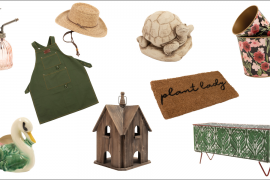Story and Photography by Holly Leitner
The two share a beautiful history — two natural, raw goods woven together for thousands of years. It’s unknown when the first wine and cheese party occurred, but we can imagine a dinner spread looking a bit rustic chic — perhaps a table set on a large slab of stone, decorated with fermented fruit and aged dairy goods. These novices were discovering what would become the elegant, classy way of finishing or starting a meal at a relaxed pace.
Today’s cocktail parties and rustically elegant (sophisticated) picnics look a bit different thanks to dedicated sommelier research on the subject and just experimentation. The tradition of the final cheese course is a ritual in many European countries. In France, picturesque cheese carts stroll by tables after simple country meals. Italians end a dinner party with a few chunks of Italian Parmagiano Reggiano drizzled with oil and balsamic vinegar. And now, in America, we’re enjoying these timeless Old World farmstead cheeses as well as our burgeoning New World artisan cheeses.
“For years and years, European cheese makers, especially in France, were leading the market on artisanal, farmstead cheese,” says John Terlato, Napa Valley vintner, vice chairman of Terlato Wine Group and Geneva Lake homeowner.
“As a family, we’ve had the luxury of traveling through various European wine regions with other winemaking families and discovered some incredible cheeses and wines,” says Terlato. “However, for the last 20-25 years or so, the American artisanal cheese movement has become just as stunning.”
“Well paired foods and wines bring double the pleasure. In fact, when done thoughtfully, both the food and the wine taste better than they would on their own.” – John Terlato, Vice Chairman, Terlato Wine Group
In fact, with the European-influenced fluctuation of sheep and goat milk cheeses, several handcrafted cheeses are created close to our backyard.
“Wisconsin is one of the bigger producers of sheep and goat milk,” says Laura Jacobs-Welch of Brick Street Market in Delavan.
These artisanal cheeses have their place at the table — whether it’s as the solo act of a leisurely weekday lakeside dinner, or as the last course while sipping on the final big reds from dinner.
ON PAIRING
“Well paired foods and wines bring double the pleasure. In fact, when done thoughtfully, both the food and the wine taste better than they would on their own,” says Terlato. “It’s kind of like a great piece of music – when all of those random notes are thoughtfully woven together, the sum of the whole is greater than the individual parts.”
There are classic rules for cheese and wine pairing, but Terlato suggests to also experiment as well, using these rules as merely a starting point.
THE RULES OF PAIRING
Be Subtle “I tend to choose subtle wines and subtle cheeses, rather than the obvious intense end of each spectrum,” says Terlato. “Otherwise, it’s like pushing the levels all the way up on a sound board and it can be much more interesting to dance with the nuances.”
He suggests choosing specialty cheeses from artisanal makers and pairing them with unique, handcrafted wines.
White Wines Pair Better with Cheese (Classically)
Because of the acidity in both white wine and cheese, it tends to be an easier pairing. This is especially true with the creamy cheeses, as red wine’s tannins can often overpower the cheese.
Consider Age & Intensity
A strong California Cabernet Sauvignon will complement an equally intense aged cheddar, young gouda or a Parmigiano Reggiano. On the opposite end of the spectrum, a young, crisp and delicate Sauvignon Blanc harmonizes well with a lighter, tart goat cheese or a brined cheese such as Feta or Chaumes. Suggested light intensity pairing: Chimney Rock Sauvignon Blanc or Elevage Blanc with Cypress Grove Humboldt Fog (a Northern California goat cheese with a subtle, tangy flavor and distinctive layer of edible vegetable ash).
Suggested high intensity pairing: Chimney Rock Cabernet Sauvignon with a Carr Valley Aged Cheddar cheese.
Match Terroir
How a place’s unique climate, soil, terrain and tradition affects the wine or cheese is referred to as the “terroir” of a place.
“It’s the whole idea of wines and foods that come from the same place,” says Terlato. “Animals grazing from the local greenery near where the grapes are grown generally have a harmony.”
For instance, if you buy an authentic cheese from Burgundy, France, there’s a good chance it will pair well with its neighboring Burgundian wines. The concept of terroir matching is not a requirement for pairing, but it often creates an easy, seamless pairing.
Suggested Burgundian pairings: Traditional red or white Burgundian wines with Charolais and Époisses.
Suggested Northern Californian pairings: Rutherford Hill Sauvignon Blanc and Cypress Grove Purple Haze Goat Cheese.
Texture – To Complement or Contrast?
Typically, rich, creamier cheeses meld well with a creamy wine just as an earthy tannic red wine will pair well with an earthier, textured cheese. On the other end of the spectrum, it’s often nice to cut the creaminess of a rich cheese with a refined sparkling wine.
Suggested texture pairings: Rutherford Hill Chardonnay or Bollinger NV Champagne with Cowgirl Creamery Mt. Tam Triple Cream Brie or Brie de Nangie.
Salt + Sweet = Bliss
This goes with the notion of “Opposites Attract” as is tasted in chocolate-covered pretzels or kettle corn. The sweetness balances out the salt and both flavors flourish happily.
Suggested Pairing: Rutherford Hill Port and Point Reyes Original Blue
“Overall, these are just starting points,” says Terlato. “Trust your judgment — no one knows better what you like than you.”
Experimentation is key.
“Our Rutherford Hill Winery’s Merlot is going to be different than a neighboring Merlot, so that’s why it’s essential to test for yourself. The same goes for cheese – no two artisanal cheeses are the same. There are a lot of different shades and there are no absolutes.”
Terlato suggests choosing about six different artisanal cheeses, one or two wines and tasting everything together to then pick your favorites.
CHEESE SERVING 101
Choose the course. Cheese is a great final course or first course — it’s the European way of slowing down a meal as you nibble on a delicious cheese.
“Don’t go overboard,” says Jacobs-Welch. “In America, we tend to eat a lot in our meals so just a little, small plate to finish up works well if it’s for dessert.”
Balance the courses. If you have a rich dinner, go with a lighter cheese.
Add some color to the cheese plate. If you’re serving the cheese course as the main meal, create some variety — a little salami, prosciutto and crudité vegetables.
“Make it colorful and pleasing,” says Jacobs-Welch. Decorate the plate surrounding that wedge of Cheddar.
Go with dried fruit vs. fresh fruit. Fresh fruit isn’t the best with wine as its too acidic. Dried apricots, figs and apples taste delectable with cheese.
“Eat it now,” says Jacobs-Welch. The best cheese is fresh and ripened. However, if you can’t finish the cheese, wrap it in wax paper and then in a zip lock bag. Keep it for roughly a week from the purchase date.
WHERE TO FIND THESE ARTISANAL PRODUCTS:
- Bruno’s Liquors, 524 Broad St., Lake Geneva, 262-248-6407
- Lake Geneva Country Meats, 5907 State Rd. 50 E., Lake Geneva, 262-248-3339
- Pop More Corks, 617 W. Main St., Lake Geneva, 262-348-9463
- Sonoma Cellars, 1807 E. Geneva St., Delavan, 262-740-2200
- www.uncorked.com (Terlato wines)





